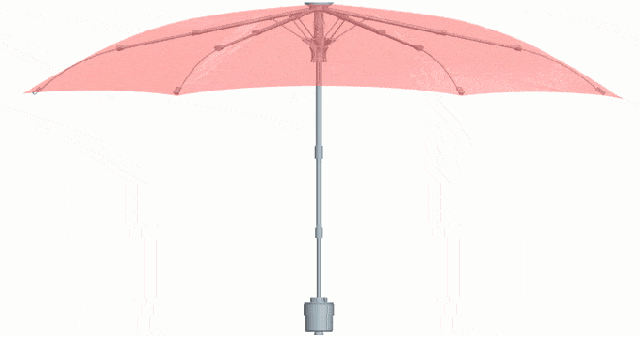

These are early bird prices, but once it hits the market, the average price of an air umbrella is expected to be about $200. The Air Umbrella consists of three ‘sections’ – a motor near the head, a lithium battery at the center, and an controller with a switch at the bottom. According to their demo video, the product will be available in three variants – a ($88), b ($98), and c($108). Then the airflow forms an umbrella without a visible cover.” So when we make use of the airflow, we can protect ourselves from the rain drops. “The jet airflow can isolate some objects. The faster the air moves, the greater the energy is,” the engineers explained on the Kickstarter page. The flowing air can change the moving path of the object. The product is the brainchild of a group of graduates from Nanjing University of Aeronautics and Astronautics – they’ve set up a Kickstarter campaign to raise funds, and they’ve already collected $60,0000, exceeding their target of $10,000 with seven days to go. It does sound super-cool to be able to deflect the rain with blasts of air, creating the illusion of an invisible umbrella. Well, looking past that tiny flaw, you’d have to agree that the Air Umbrella is an ingenious invention. So you’d probably want to use it only if you’re confident you can get out of the rain in 30 minutes or less. In true Cinderella style, the ‘magic’ wears off at the stroke of the 30th minute – the umbrella stops producing air and you’ll be drenched in no time at all. You’ll get the Monitor Weekly magazine, the Monitor Daily email, and unlimited access to is a small catch, of course – the device works only for a short while. If you’re looking for bran muffin journalism, you can subscribe to the Monitor for $15. We’re about kicking down the door of thought everywhere and saying, “You are bigger and more capable than you realize. We have a mission beyond circulation, we want to bridge divides. We’re known as being fair even as the world becomes as polarized as at any time since the newspaper’s founding in 1908. We’re run by a church, but we’re not only for church members and we’re not about converting people. The Monitor is a peculiar little publication that’s hard for the world to figure out. And I’m going to argue that we change lives precisely because we force open that too-small box that most human beings think they live in. We’re the bran muffin of journalism.īut you know what? We change lives. We’re seen as being global, fair, insightful, and perhaps a bit too earnest. If you were to come up with a punchline to a joke about the Monitor, that would probably be it. Sometimes, we call things ‘boring’ simply because they lie outside the box we are currently in.” My work in Kenya, for example, was heavily influenced by a Christian Science Monitor article I had forced myself to read 10 years earlier. “Many things that end up” being meaningful, writes social scientist Joseph Grenny, “have come from conference workshops, articles, or online videos that began as a chore and ended with an insight. About a year ago, I happened upon this statement about the Monitor in the Harvard Business Review – under the charming heading of “do things that don’t interest you”:


 0 kommentar(er)
0 kommentar(er)
